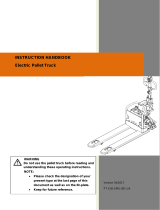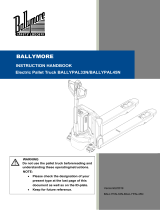02.15 EN
8
D Battery - Servicing, Recharging, Replacement ....................... 39
1 Safety Regulations Governing the Handling of Lead-Acid Batteries ....... 39
2 Battery types............................................................................................ 41
3 Exposing the battery................................................................................ 43
4 Charging the battery ................................................................................ 44
4.1 Charging the battery with a stationary charger........................................ 45
4.2 Charging the battery with an on-board charger (o) ................................ 46
5 Battery removal and installation .............................................................. 51
5.1 Removing the battery from the top .......................................................... 52
5.2 Removing the battery from the side......................................................... 53
E Operation ................................................................................ 55
1 Safety Regulations for the Operation of the Forklift Truck....................... 55
2 Displays and Controls.............................................................................. 57
2.1 Battery discharge monitor........................................................................ 60
2.2 Battery discharge indicator ...................................................................... 60
3 Starting up the truck ................................................................................ 61
3.1 Checks and Operations to Be Performed Before Starting Daily Work .... 61
3.2 Preparing the truck for operation ............................................................. 62
3.3 Checks and operations to be carried out when the truck is operational .. 64
3.4 Parking the truck securely ....................................................................... 65
4 Industrial Truck Operation ....................................................................... 67
4.1 Safety regulations for truck operation...................................................... 67
4.2 How to act in hazardous situations.......................................................... 68
4.3 Emergency Disconnect............................................................................ 69
4.4 Automatic braking.................................................................................... 71
4.5 Travel....................................................................................................... 72
4.6 Steering ................................................................................................... 77
4.7 Brakes ..................................................................................................... 77
4.8 Load handler raise/lower ......................................................................... 79
4.9 Lifting, transporting and depositing loads ................................................ 81
4.10 Ergonomic Lift (o) (ERE C20)................................................................. 85
5 Troubleshooting....................................................................................... 88
5.1 Truck does not start................................................................................. 89
5.2 Load cannot be lifted ............................................................................... 90
6 Operating the truck without its own drive system .................................... 91
6.1 Release and activate the drive wheel brake............................................ 91
7 Optional equipment ................................................................................. 93
7.1 Emergency operation with service key GF60 .......................................... 93
7.2 CanCode Keypad (o).............................................................................. 95
7.3 Setting the truck parameters with CanCode............................................ 114
7.4 Parameters .............................................................................................. 116
7.5 Setting the Battery Parameters with CanCode........................................ 121
7.6 Set ELH 2415 / 2425 / 2435 Charger Characteristics with CanCode...... 123
7.7 CanDis Display Instrument (o) ............................................................... 125
7.8 ISM access module (o)........................................................................... 126

























